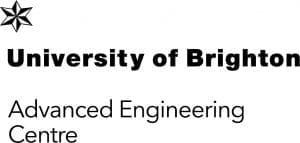Dr Alessandro Tombari is starting a project to design next-generation onshore and offshore wind farms to withstand damage from future climate change events.

Dr. Alessandro Tombari, Senior Lecturer
Dr Tombari is based in the University of Brighton’s Sustainability and Resilience Engineering Research and Enterprise Group, as well as working in its internationally recognised Advanced Engineering Centre. He received a New Investigator Award grant of £220,947 from the Engineering and Physical Sciences Research Council (EPSRC) for the study.
A key focus will be to examine how wind turbines can deal with stronger storms and taller waves caused by climate change. Next gen wind turbines are needed taller and larger, to boost wind-generated energy in coming years to follow the increased requirements worldwide. In 2020, 20% of the UK’s electricity was obtained from onshore and offshore wind farms, so UK expertise in wind turbines can and will also open expansion into emerging markets involving construction of new wind farms in developing countries facing risks of natural events unlikely here, such as earthquakes or tsunamis.
One focus of the research is the transition pieces in wind turbines – the structural element that connects the tower with its foundation. During extreme natural events, these have to tolerate extreme stresses, and Dr Tombari will look at replacing traditional connectors with a novel mechanical hourglass-shaped joint called an Hourglass Lattice Structure (HLS). This combines benefits from two technologies proven to be extremely effective in seismic engineering, defined as the “reduced beam section” and the “rocking foundation” design.
Dr Tombari will also carry out offshore testing of experimental small-scale wind turbines, using the world’s first-ever underwater shake-table. This will simulate multi-hazard scenarios such as the recently discovered phenomenon dubbed ‘stormquakes’.
Dr Tombari said: “The successful outcome of this timely project will allow next-generation wind turbines to be more resilient and cost effective so that wind energy can develop as a competitive renewable energy resource with less need for government subsidy. The inclusion of industrial partners in all stages of the project ensures that the technical developments will be included in commercial devices for a medium-long term impact.”
Project partners include the British Geological Survey (UK), Offshore Wind Consultants Limited (UK), ErgoWind (Italy) and Western University (Canada). Dr Tombari is also keen to ask Rampion – the company behind the giant wind farm off the coast of Brighton & Hove – to join the steering committee for the project.






Leave a Reply